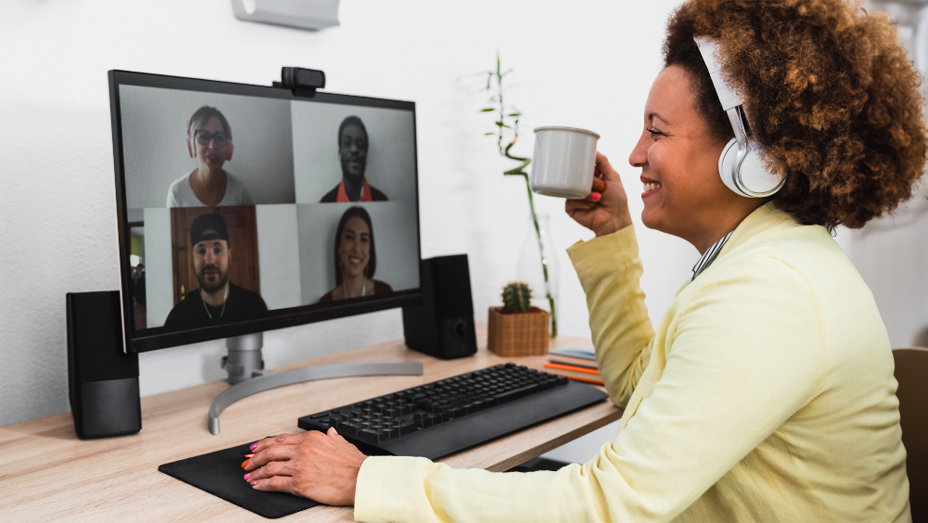Running a business has never been easy. Challenges are, in a way, the fuel that pushes organizations to improve, adapt, and innovate. Considering what a storm the last few years have been, we thought of asking business leaders about the challenges they see for 2024. What is the future going to look like for businesses this year? What are some of the issues leaders are preparing for?
Keep reading and find out more.
TL; DR:
- Remote and hybrid work are both mainstream, but some businesses still want to connect the gaps in company culture and technology
- Generational gaps seem to be making quite a bit of noise – it will be interesting to see how this looks by the end of 2024
- Skilled workers and finding good talent continues to be a challenge, even in the shaky economy landscape
- Sustainability and environmental friendliness appear to be gaining even more ground
- Cybersecurity continues to be a major concern, particularly with the rise of AI
Building Bridges for Company Culture in Remote & Hybrid Work
Many of the people we asked about their business challenges for 2024 referred back to hybrid and remote work. Although it's been three (almost four!) years since the lockdowns, the "new normal" is still being shaped. Business leaders are wondering how to adapt to these new modes of operation, whether they will be temporary or permanent.
Some told us they want to find a middle-ground between remote/ hybrid and in-office work.
"It was challenging to convince employees to return to the traditional office setup after years of working remotely. The fact that remote performance often exceeded pre-pandemic onsite levels added to this resistance. As a solution, we created a flexible model allowing employees to choose between remote and onsite work based on the nature of their tasks.
For instance, roles integral to customer relationships and in-plant technical support, like our sales groups, predominantly work onsite. On the other hand, roles that can be effectively executed remotely, such as certain administrative functions or tasks like data analysis, now have the option to stay remote or adopt a hybrid arrangement."
-- Campbell Tourgis, Executive VP & Chief Operating Officer at Wainbee

Others told us about geographical and cultural challenges associated with remote work.
"As an SME, we have 45 full time employees from 12 different nationalities. Our modern day challenge has been more of a cultural one. Many of our employees work remotely in their home countries and so our struggle is to make everyone feel part of a singular team.
To do this, we host virtual biweekly meetups where anyone from any team can join in for a cultural exchange whether that's teaching a language, sharing local traditions, or sharing a skill. We've found this to be a great way to create connections and build a strong company community.
(And yes, this event takes place during working hours)"
-- Simon Bacher, CEO & Co-founder at LingApp
"The pandemic changed how we perceive labor and labor’s place. By going through this transition, we try to respect various employee tendencies without losing a unified corporate identity. It is not just about logistics, it is about creating a sense of belonging and engagement no matter where work takes place.
Our approach is multifaceted. We are having open discussions with our team, collecting their input on what they need to feel supported and effective. The flexibility is essential, so we are trying out hybrid models, which enable employees to opt for a combination of remote and on-site work that works best for them. However, we are aware of the dangers, including the possibility of remote workers becoming ‘out of sight, out of mind’.
To solve this we invest in technology that improves virtual collaboration, making it as fluid and immersive as physical engagement. We’re also redefining our performance measures to be more outcome-based rather than visibility-based in the office.
However, in my opinion, the most critical move we’re making is doubling down on our efforts to cultivate our corporate culture."
-- Anup Kaystha, Founder at Serpnest
Some spoke about finding the perfect blend between remote and in-office work.
"One of the main challenges I’m facing this year in the modern workplace is the integration of remote and in-office work. With the shift to remote work during the pandemic, we’ve seen the benefits it can bring in terms of flexibility and work-life balance. However, as we transition back to the office, it’s crucial to maintain these benefits while also fostering the collaboration and camaraderie that comes from in-person interactions.
This challenge arises because striking the right balance between remote and in-office work requires careful planning and consideration of individual employee needs. It’s not a one-size-fits-all solution, and what works for one team or individual might not work for another.
To address this, I plan to implement a hybrid work model that allows for both remote and in-office work. This will involve regular check-ins with teams and individuals to ensure their needs are being met, as well as an open dialogue about what’s working and what’s not. The goal is to create a flexible and inclusive work environment that supports both collaboration and individual work styles."
-- Sudhir Khatwani, Founder at The Money Mongers
"One of our most significant challenges is balancing building a strong company culture and responding to remote work dynamics. A cohesive and dynamic company culture is key to employee engagement and business success.
The problem lies in the need to preserve the friendliness and collaboration our team excels in despite the long commutes that come with remote working. The absence of face-to-face interactions can hurt communication and team spirit, and spontaneous conversations fuel innovation.
We’re introducing new virtual team-building initiatives and communication channels to bridge this gap. Our team members can connect outside of their professional roles through regular video conferencing, virtual coffee breaks, and engaging online workshops."
-- Diana Zheng, Head of Marketing at Stallion Express
...And others were more preoccupied with the operative side of hybrid work.
"The transition towards a work environment that combines remote and in-person work has upended conventional approaches to promoting cooperation, unity, and a common goal. This problem is important because corporate culture is the foundation of our identity and performance; it affects staff retention, happiness, and, in the end, our capacity to provide clients with excellent service.
To address this, creative methods of communication and participation are needed. In order to ensure that every team member has equal access to resources and can contribute completely, we are investing in technology that facilitates seamless collaboration regardless of location. Furthermore, we're redesigning our workspace to promote deeper face-to-face conversations when team members do visit the office."
-- Russell Noga, CEO at Medisupps

Generational Gaps & Multigenerational Teams
Interestingly, many of the business leaders we asked about their challenges for 2024 referred to generational gaps they've been trying to mend. With five generations currently in the workforce, it's no surprise that there can be conflicting perspectives and approaches to work.
"It's a real challenge to bridge the generation gap in today's workplace. Walking through our workplace (and in our virtual workplace, too, since we have both on-site and remote employees), I've realized that one of the most rewarding yet challenging aspects is managing the generational differences within a modern organization. As a business leader, I've observed how understanding and managing these differences can transform a company.
Boomers stick to their generation's principles, valuing company loyalty and face-to-face communication. Meanwhile, tech-savvy Millennials look for collaborative, innovative environments that promote continuous learning. Gen Zs bring new perspectives and a passion for social causes, but they can also have challenging liberal mindsets in today’s world.
It's actually quite difficult, when you think about it. This all boils down as part of Diversity, Equity, and Inclusion (DEI). Every team has a mix of personalities: introverts, extroverts, the tech-focused, the sociable ones, and many more. When these diverse characters collaborate on a project, they need to unite to produce the best results. That's where the difficulty lies."
-- Fawaz Naser, CEO at Softlist.io
“Many of the current guard of leaders are looking to the new generation of workers, Gen Z, and viewing them as a problem to be solved. But the truth is, Gen Z are the solution to many of the current challenges in the modern workplace.
This generation craves equitable, purposeful, and inclusive work environments. They’re driving the demand for workplaces that prioritise mental health, flexibility, and diversity.
Today’s leaders and workplaces must evolve to create a workplace culture that attracts the top Gen Z talent, and they must do it now. It’s time to wave global citizenship, sustainability, employee wellbeing and diversity into our organisations.
By 2025, Generation Z will form 27% of the workforce. Their entrance signals not just a demographic shift but a transformation in what the modern workplace looks like and means. For organisations that listen and learn from Gen Z, the future looks bright.”
-- Cherie Mylordis, Founder and Principal at Nextgenify

Poor or Insufficient Skilled Talent in the Workforce
The inadequacy of skilled talent in the workforce poses a considerable challenge for businesses striving to stay competitive in a rapidly evolving marketplace. Companies across industries are seeking innovative approaches to attract and retain top-tier professionals.
"The key challenge this year is insufficient training. I value the importance that the vitality of our team requires staying in tune with new technologies and approaches used in the industry. The dynamics, oftentimes, are rapid in comparison with the time taken to thoroughly train.
This skill and knowledge gap can lead to inefficiencies, errors, and a decline in service quality, leading to our reduced competitiveness in the market.We are going to build the Continuous Learning Program using the best practices around microlearning and just-in-time training. We are using this approach to divide the complex information into bit-sizes - easily digestible modules that will be available at the moment of demand - for our team to be able to learn at their own pace and, at the same time, apply the newly gained knowledge. We are also considering partnering with ed-tech providers to onboard and train in particular key areas, ensuring that our team has the skill sets to perform and move forward with our business. This aligned with our commitment to encourage an environment that fosters continual improvement and adaptability."
-- Name: Ritesh Raj, COO at CuddlyNest
"The shortage of workers who possess knowledge and experience in software development will continue to worsen this year. Thanks to the growth of numerous AI startups, the demand for software engineers has reached an all-time high. This poses challenges for smaller startups that struggle to attract talent because of their limited resources. The situation will worsen in the coming years as more companies incorporate AI into their businesses. In this environment, startups must be creative in utilizing non-engineering staff and SaaS tools to replace certain engineering tasks and sustain their growth."
-- Seung Oh, CEO & Co-founder at Engram
Sustainability and Environmental Friendliness Made It to the Top of the Concerns
From small startups to global corporations, the call for sustainability and eco-friendly business practices is louder than ever before. Leaders are now realizing the significance of this approach not only for the environment but also for their company's long-term viability.
"By its very nature, the beauty industry has been accused of contributing to environmental problems, including plastic waste and CO2 emissions. As the Chief Executive Officer (CEO) of Perfect Locks LLC, I understand the need to address these issues head-on.
We have made significant progress in adopting eco-friendly processes, such as using recyclable packaging and reducing water usage in our manufacturing operations. However, there is always room for improvement.
One of our next steps to tackle sustainability issues is to source our human hair ethically and responsibly. We prefer partners with suppliers who follow fair labor standards and sustainable harvesting practices. We are also looking into new materials and technologies to reduce environmental impact without sacrificing quality.
Sustainability isn’t just a buzzword for us; it’s an integral part of what we do. By continually assessing and improving our sustainability practices, we’re setting the tone for a more sustainable future for beauty."
-- Priyanka Swamy, CEO/ Founder at Perfect Locks
Cybersecurity Was Not Forgotten
As threats become more sophisticated, companies must advance their security strategies to protect sensitive data and maintain customer trust. Some of the business leaders made it clear cybersecurity concerns are a priority for them.
"One of the biggest challenges our company is facing this (and any!) year is making sure our team, which is spread out all over the world, stays protected from the cybersecurity point of view. Working remotely has its advantages, such as flexibility and the ability to hire talented employees across the globe. However, it also brings up some tough security issues. Every remote connection is a potential risk, and we need to ensure our data is safe and protected from various cyber threats.
So, we in our company focus a lot on training and the right tech tools. We're teaching our team about the latest security risks and explaining to them how to prevent such kinds of problems. We need to make sure everyone knows how to keep their data secure, even when they're working from their kitchen table.
But apart from training, we're also working on our company culture. We want everyone to feel like they're part of the security team, no matter their role. So we aim to make security a common goal and ensure everyone feels comfortable speaking up if something seems off."
-- Nazar Tymoshyk, CEO and Founder at UnderDefense
Technology Adoption & Digital Transformation Will Remain Top Priorities
The COVID-19 pandemic has accelerated the adoption of technology and digital transformation across industries. Business leaders from various sectors shared their thoughts on how this trend will continue to evolve in the coming years.
"The biggest issue we are facing this year is the adoption of technology. Keeping up with the latest software and tools is essential to remaining productive and competitive in the face of technology's constant improvements. It can be challenging and time-consuming to incorporate new technologies into our procedures, though.
We have adopted a two-pronged strategy to solve this difficulty. First and foremost, we have made investments in our staff's continual education and training so they have the skills needed to adopt new technology. This covers mentorship programs, online classes, and workshops. Second, we have established strategic alliances with IT service providers who can help us integrate cutting-edge tools and software into our regular business processes. We are certain that by pooling our resources, we can overcome the obstacle of technology adoption and capitalize on the advantages it offers to our companies."
-- Matt Little, Director / Owner at Festoon House
"In my experience overseeing technology consulting at ETTE, one of the most formidable challenges in today's modern workplace has been ensuring effective technology integration while managing a remote workforce. With the pandemic fueling an irreversible pivot to remote work, the balance between technology that facilitates efficiency and the human aspect of management became a crucial point of focus.
To give you a concrete example, when transitioning to remote work, we had to reimagine operational workflows that were primarily designed for in-person collaboration. Suddenly, creating a secure, collaborative, and productive digital workspace became essential. We used cloud-based solutions to enhance operational efficiency, but more importantly, we had to foster a culture of open communication and maintain a sense of team unity in a virtual environment. Recognizing and addressing feelings of employee isolation by reinforcing our community through regular video check-ins and virtual team-building activities was pivotal. It wasn't just about delivering managed IT services effectively; it was also about ensuring our team remained engaged and connected to our mission."
-- Lawrence Guyot, President at ETTE
Buckle Up and Enjoy the Ride
Between AI, uncertainty, and a "new normal" we have yet to set in place, the world of business is bound to get a little bumpy in 2024. However, these challenges present opportunities for growth and innovation -- so buckle up, strap yourself in, and get ready to enjoy the ride.
Whatever's on the other side looks like it values the environment, work/ life balance, and innovative thinking -- so it's more than worth building and looking forward to.











